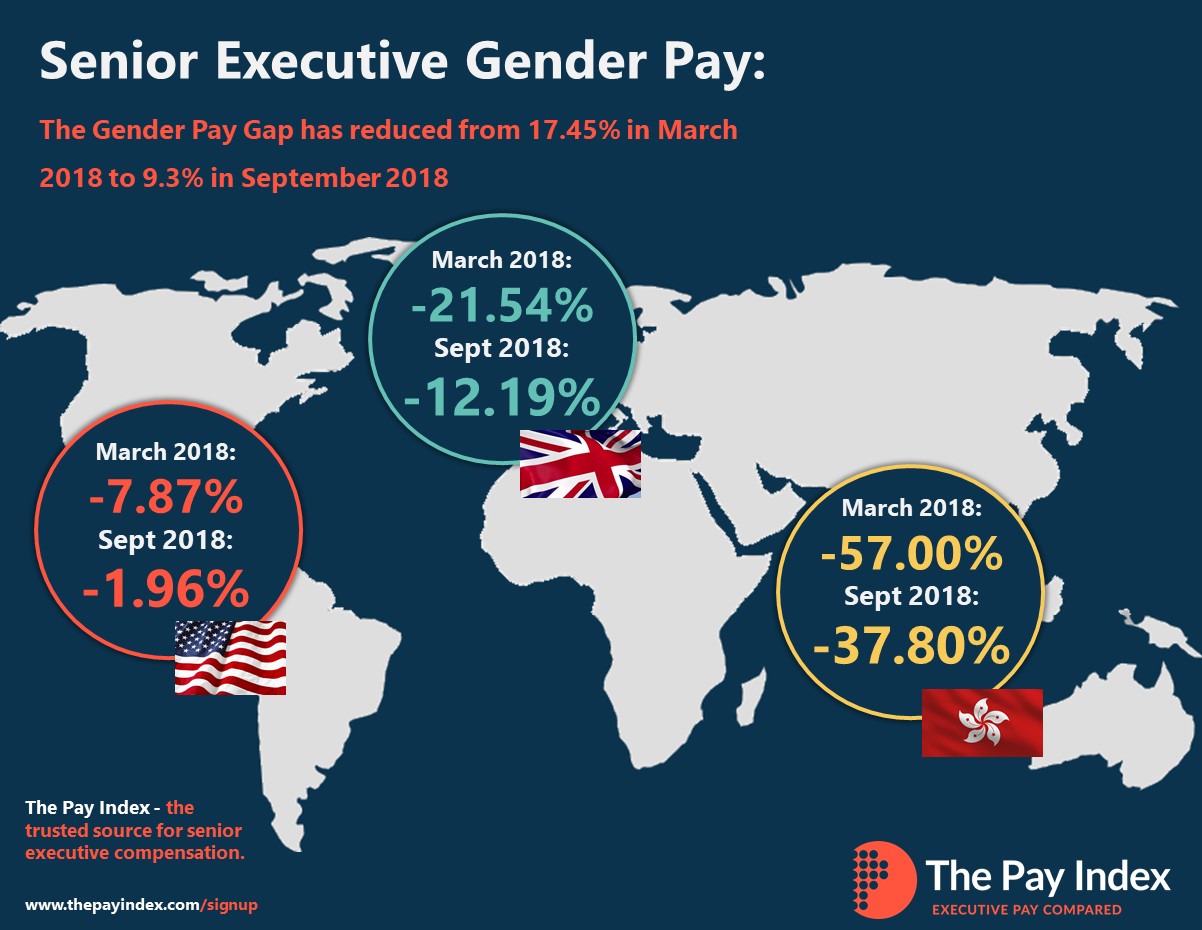The Gender Pay Gap has reduced from 17.45% in March 2018 to 9.3% in September 2018
9/19/2018 The Pay Index
In March 2018 The Pay Index conducted its first gender pay gap audit across the global senior executive community, analysing pay data provided by over 4,000 global executives. Figures showed that the average gender pay gap, across all geographies and functions was -17.45%, displayed through an average male salary [of those registered] being £370,750, against an average female salary is £310,150.
In September 2018 we conducted our first updated audit to assess what impact (if any) the implementation of UK gender pay reporting legislation, combined with the overall spike in global gender pay media coverage, had played within these figures.
Analysing the latest figures, which have increased to 7,000 senior global executives, the overall gender pay gap has now fallen to -9.3%, reflected through the average male salary [of those registered on the website] being £396,810 whilst the average female salary is £327,240.
Here are some of the key highlights:
Drilling down by country:
- UK – when the average gender pay gap was analysed for the UK in March it returned a figure of -21.54%. In September this gap had reduced to -12.19%.
- USA – the US community displayed a much smaller gender pay gap of -7.87% in March, and this had reduced even further by September to just -1.96%
- Hong Kong - had one of the largest gender pay gaps in March, at over -57%. This figure is still very high, but has reduced to -37.80%
Drilling down by function:
Again, comparing data between March and September, we found:
- Human Resources has reduced from -21% to -14.12%
- Finance has increased from -5% to -8.82%
- The COO function showed a global gender pay gap of -14%, which reduced to -0.11%
Refreshingly, according to the latest figures female executives working in Operations and Sales, Product & Marketing functions, both displayed higher average pay when compared to their male counterparts (+0.11% and +1.29% respectively).
Summary
The figures clearly show that there has been a positive and very tangible impact as a result of the implementation of the UK Government reporting, combined with the increase in global media coverage.
There is still much work to done to create parity within pay, but the speed and direction of the pay trends is a positive sign and will hopefully lay the foundations for a far more equal and transparent pay agenda in the future.
Data breakdown:
- All data is less than 12 months old
- Data taken from over 7,000 senior executives
- 50% of the database work within companies of 10,000+
- 90% of the database possess a Bachelors and / or Masters Degree
- 86% of the database possess 16 or more years in industry
- 450 different cities
- 64 different countries

